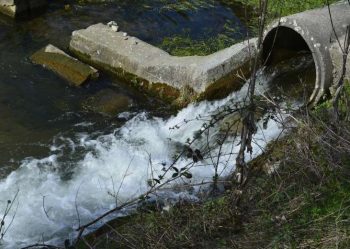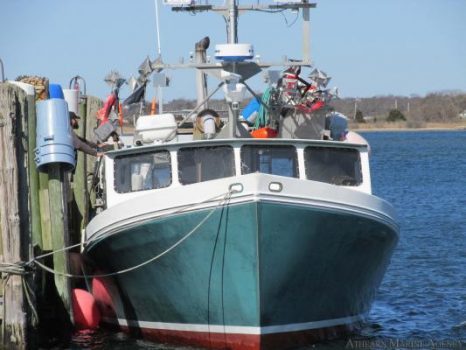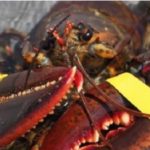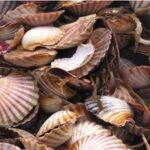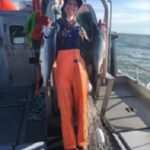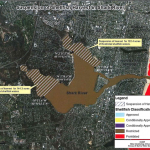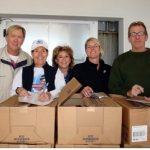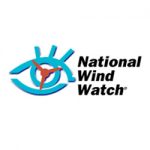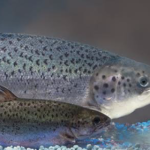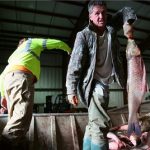Monthly Archives: February 2019

California could be held liable for whale entanglements
The Center for Biological Diversity is hopeful its lawsuit filed over whale and sea turtle entanglements is nearing its conclusion after a federal judge suggested she may find the California Department of Fish and Wildlife liable for the entanglements, a center spokesman said.,,, The two parties have until March 13 to work out their differences and report back to the judge. If no settlement is reached, the judge will issue a finding. >click to read<12:17
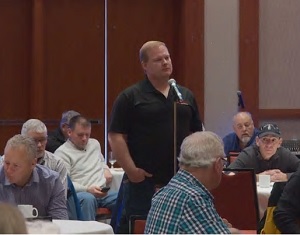
P.E.I. fishermen exploring compensation if damage done to fisheries
The Prince Edward Island Fishermen’s Association is exploring ways members could be compensated if damage is done to local fisheries. The topic was on the agenda for the association’s annual general meeting Saturday. The group has been working with law students at the University of New Brunswick to research different compensation packages in the event of environmental damage. >click to read<

Hatchery misfits
Scientists studying pink salmon in Alaska’s Prince William Sound have come to a startling conclusion: Female hatchery fish gone feral reproduce at only about half the rate of their wild cousins. The finding, if confirmed by further studies, could have broad implications for the management of mixed stocks of wild and hatchery salmon. Why hatchery fish perform so poorly in their natural environment is unknown, Alaska Department of Fish and Game biologist Chris Habicht said Friday. The agency researcher cautioned, as well, that the latest finding is based on data from only one reproductive cycle. The dismal spawning success of hatchery fish during 2014-2016 could be a statistical anomaly. Future studies could find higher returns and even out the results when averaged over the years. >click to read<21:41

R.I. fishermen, Vineyard Wind reach deal on compensation
A Rhode Island fishing board on Saturday voted in favor of a revised compensation offer from offshore wind developer Vineyard Wind in a decision that boosts the New Bedford company’s chances of securing a key approval from state coastal regulators later this week. In a unanimous vote at the special meeting, the Fishermen’s Advisory Board accepted the new offer that includes $4.2 million in payments over 30 years for direct impacts to commercial fishermen from Vineyard Wind’s 84-turbine wind farm proposed in Rhode Island Sound, as well as the creation of a $12.5-million trust set up over five years that could be used to cover additional costs to fishermen resulting from the project The Rhode Island Coastal Resources Management Council is now set to vote Tuesday night on whether it believes the $2-billion project is consistent with state coastal activities, including fishing. >click to read<19:25
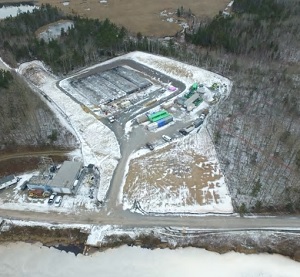
Feds to conduct environmental assessment of Boat Harbour cleanup
Nova Scotia’s biggest contaminated site will get a federal environmental assessment before the cleanup begins. The decision was based on submitted comments and the possibility that carrying out the project may cause adverse environmental effects, the federal government said in a news release late Friday night. Northern Pulp’s waste treatment plant at Boat Harbour is scheduled to close in January 2020, as laid out in provincial legislation passed by the Liberals in April 2015. The pulp mill has said it needs a one-year extension to get a replacement plant up and running because it cannot operate without a treatment facility. Premier Stephen McNeil has refused to extend the deadline of the closure. >click to read<14:42
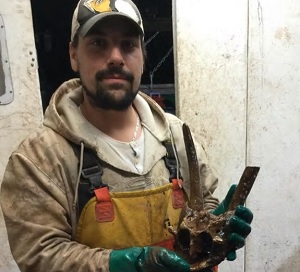
Scallop fishermen find walrus skull in Bay of Fundy
What was going to be a cold day out dragging for scallops on the Bay of Fundy turned out to be an exciting one for the captain and crew of the Sitansisk 1. In the scallop drag, David Underhill, a 28-year-old crew member from St. Mary’s First Nation in Fredericton, discovered a walrus skull with tusks attached. “It was first thing in the morning, it was our first tow and we were just going out to pick the table to get the scallops on board, and I seen it right away.” What Underhill could see among the scallop shells was the walrus skull and tusks. Photo’s, >click to read<13:51

New controls in Maine to prevent poaching of valuable eels
Maine’s lucrative baby eel industry will likely face tighter controls this year designed to thwart poaching, as officials consider requiring state law enforcement officers to oversee the packing and shipping,,, This year, the Maine Department of Marine Resources is looking to add a requirement that elver exporters in the state must notify the Maine Marine Patrol 48 hours before preparing to pack and ship the eels. The officer will witness the weighing and packing,,, >click to read<11:22
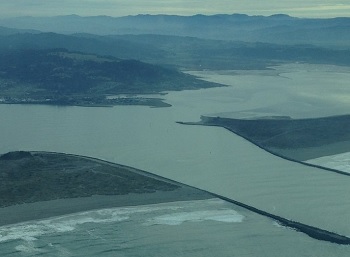
‘Life-Threatening’ Emergency on Humboldt Bay as Harbor Entrance Silts Up; Commercial Shipping Closed Down
The entrance to Humboldt Bay Harbor is dangerously shallow at the moment — so shallow that commercial ships are unable to traverse the channel leading to local docks. Commercial fishermen, whose boats don’t draft as much, are still able to get in and out of the bay, but a shallow channel means dangerous conditions, with waves breaking against their craft. It’s so bad right now that if the channel silts in much further, Humboldt County’s fuel supply, most of which comes in by barge, could be at risk. That was the message delivered at an emergency meeting,,, >click to read<20:46
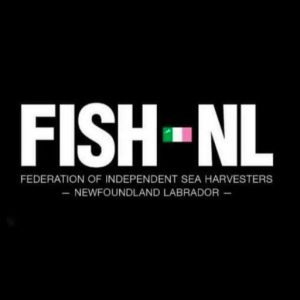
FISH-NL: C-NLOPB ‘waking up’ to concerns over impact of offshore seismic activity
The Federation of Independent Sea Harvesters of Newfoundland and Labrador (FISH-NL) is frustrated the Canada-Newfoundland and Labrador Offshore Petroleum Board isn’t prepared to suspend offshore seismic work, but encouraged the offshore oil and gas regulator is waking up to concerns. “Ottawa takes a precautionary approach to fisheries management — which means being cautious when science is uncertain — but there’s nothing precautionary about allowing seismic to continue until the potential risks are understood. ,” says Ryan Cleary, President of FISH-NL. “The hypocrisy doesn’t escape inshore harvesters.” >click to read<20:06
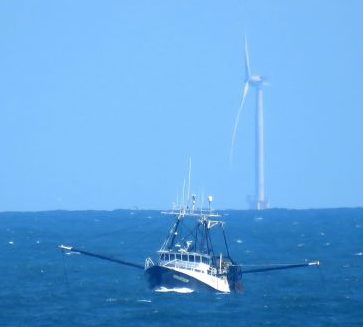
Squid fishermen in Narragansett concerned about offshore wind farm
With calamari being Rhode Island’s official appetizer, there’s no doubt squid is a lucrative industry in the Ocean State. Ask a group of squid fishermen what it’s worth and they’ll be the first tell you that it’s priceless. Then they’ll say it’s worth about $1.2 billion. However, those fishermen and the fish houses that process and freeze the squid are concerned about an offshore wind farm that will be built in the waters where they make their livelihood. “Getting the public aware of what is potentially happening to their food source is crucial,” said Meghan Lapp of Fisheries Liason of SeaFreeze Limited, one of the many fish houses in Narragansett. >click to read<18:18
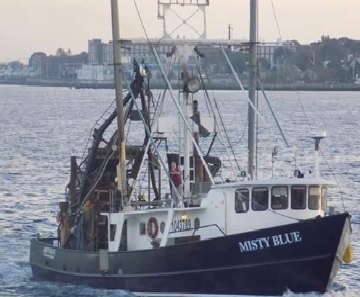
NTSB says clam tank flooding likely caused fatal sinking
Federal investigators have determined that the likely cause of the sinking of fishing boat off the coast of Nantucket in 2017 that claimed the lives of two crewmembers was flooding in one of the vessel’s clam tanks. The National Transportation Safety Board in its Feb. 6 report said although flooding in the Misty Blue’s port clam tank was the “probable cause” of the sinking, how the water got in remains undetermined. >click to read<15:50
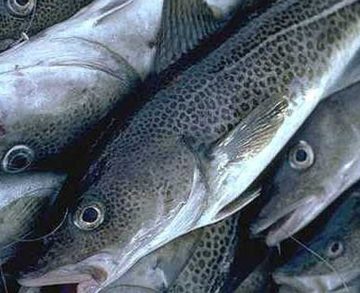
Central harvesters dig in on state of groundfish
Given the plentiful signs and successful catch rates, Herring Neck harvester Eldred Woodford says the reduction in last year’s cod quota was unnecessary. “The fish was never so thick around here, not in my 40 years. I don’t say John Cabot seen it,” Woodford said. “You go back to the 1980s when fishermen were crying out to DFO that there’s no fish, nobody listened. Now we’re telling them there’s lots of fish and still nobody listens.” ,,, Less than a dozen fishermen attended, as well as two representatives from Fish, Food and Allied Workers Union (FFAW) and FISH-NL president Ryan Cleary.>click to read<15:20
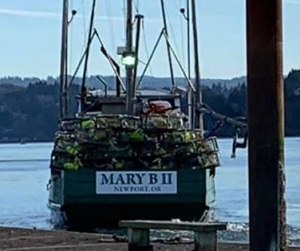
F/V Mary B II – Coast Guard seeks additional information for investigation
The Coast Guard continues the marine casualty investigation of the fishing vessel Mary B II, which capsized off Newport, Oregon, on Jan. 9, 2019, and resulted in the loss of the three crew members and the vessel. A public hearing will be held in Newport around mid-Spring and it is highly encouraged that anyone with information pertaining to the loss of the Mary B II provide it to the investigation team at [email protected]. >click to read<14:08
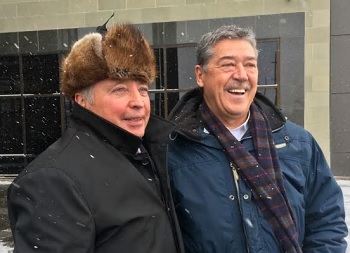
Fish processor seethes in court over RCMP actions during Shippagan riots
The former owner of a Shippagan crab processing plant testified Thursday about the damage caused by rioters during the 2003 protests. Newfoundland’s Daley Brothers are suing the RCMP for $38 million, alleging the force didn’t do its job during the fires that destroyed their fish plant, warehouse, several crab fishing boats and hundreds of traps. Hundreds of angry fishermen from the Acadian Peninsula descended on Shippagan that May to protest against the federal government’s move to reduce their crab quotas to recognize First Nations’ right to live off fishing. >click to read<13:30
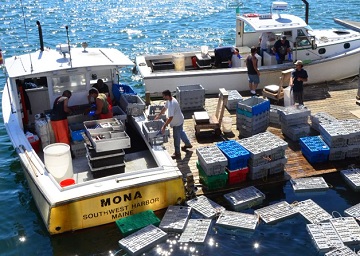
Whales and license laws top lobster industry agenda
The blowy weather that made lobster fishing a hard chance recently might well have been a blessing in disguise. The wind and cold certainly have given shorebound Maine lobstermen a good chance to learn about the tempests engulfing their industry in the Legislature and the world of fisheries regulation. Already beset by limits on how they fish — trap numbers, trawl length, the kind and strength of rope used for groundlines and buoy end lines are all regulated in the name of conservation or protecting endangered northern right whales — lobstermen are waiting to see what new rules regulators may impose on the fishery. >click to read<11:45

Vineyard Wind project in RI moves forward
The future of the Rhode Island commercial fishing industry is hanging in the balance, as the proposal to build the massive Vineyard Wind project moved forward. The media was kicked out of a meeting between the Fisheries Advisory Board Thursday afternoon in Galilee that was presenting the proposed deal with Vineyard Wind to local fisherman that would mitigate the impacts of constructing the offshore $2 billion wind farm. “The clock is ticking,” said Rich Fuka. “They’re trying to expedite this project, and the fishing industry is going to be on the receiving end of a failure.”>click to read<10:50
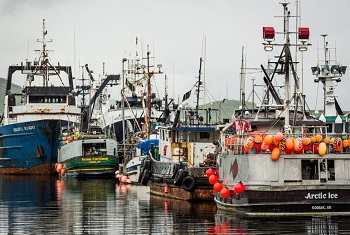
Alaska fishing communities would take hit under Dunleavy proposal to end fish tax revenue-sharing
Gov. Mike Dunleavy proposed legislation this week that would keep commercial fish tax revenue that has for years been shared with Alaska fishing communities in the state’s coffers instead, a move that mayors in some of those cities say would be devastating.At play are two taxes: Alaska’s fisheries business tax, and the fishery resource landing tax. Dunleavy’s legislation would repeal the fisheries business tax allocation to municipalities and repeal revenue sharing for the fishery resource landing tax. Those shared funds go to local governments in communities where fish processing and landings occur. >click to read<22:53
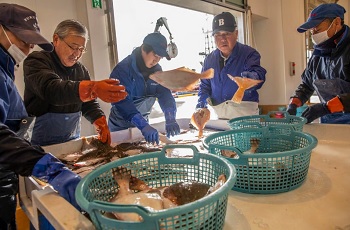
Eight years after Fukushima’s meltdown, the land is recovering, but public trust is not
Eight years after an earthquake, tsunami and one of the most severe nuclear accidents in history, the Japanese prefecture of Fukushima is getting back on its feet. Officials say the area’s fruits and vegetables are fine to eat. So is the catch from the Fukushima fishing boats. Radiation levels in the prefecture’s capital city, Fukushima, are comparable to the super-safe readings in places such as Hong Kong and London, monitors say. And a massive decontamination effort is still underway. But facts and spreadsheets supplied by the government are one thing. Rebuilding trust among locals may be significantly harder, thanks to a culture of coverups and denials that contributed to the nuclear accident and continues to dog Japan’s efforts to restart its nuclear industry,.. >click to read<21:22
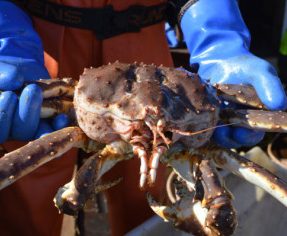
State of Crabbing in Norton Sound: Less Sea Ice, Fewer Crabs — and Fewer Crabbers
The commercial quota for winter Norton Sound crabbers this season is just over 12,000 pounds: less than half of the amount last winter, and about a third of the 2017 quota. The 150,600-pound quota for the year is broken down into 8% for winter, 7.5% for subsistence, and the remainder is for summer. That equals 12,048 lbs. for commercial and 11,295 lbs. for subsistence or CDQ fishery. Justin Leon, the assistant area management biologist for the Arctic area, based in Nome, explains the decrease has a lot to do with the latest trawl survey results from the Norton Sound. >click to read<19:34
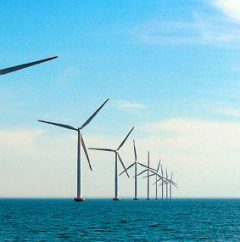
New Video Shows Impacts of Offshore Wind On U.K. Fishermen
A new video, Winds of Change, released today by the Fisheries Survival Fund (FSF), documents how the arrival of offshore wind blindsided U.K. fishermen, and how the wind farms have permanently changed their traditional fishing grounds and how they make their livelihoods. Last year, two members of FSF traveled to the United Kingdom to learn how fishermen in Ramsgate, England and Aberdeen, Scotland have been impacted by offshore wind development. Those lessons are documented in Winds of Change. “As offshore wind moves forward here in the U.S., it’s essential that it’s able to co-exist with the fishing communities that have depended on these waters for generations,” said Andrew Minkiewicz, an attorney for FSF. “We must learn from the experiences of European fishermen if we want to avoid the same pitfalls and make the best decisions for American fishermen and offshore wind developers.” >click to read<19:14
Winds of Change – >click to watch<
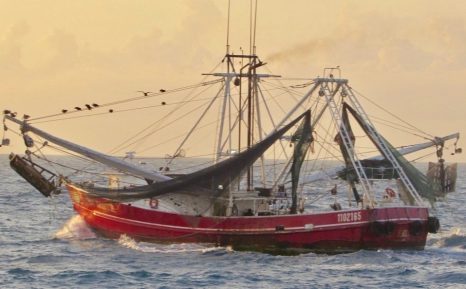
Coast Guard, NOAA terminate voyage for illegal fishing in Tortugas Ecological Reserve
The Coast Guard and National Oceanic and Atmospheric Administration terminated the voyage of the 83-foot commercial fishing vessel, Lady Kristie, with three people aboard Thursday after discovering multiple violations near Tortugas Ecological Reserve. Fishing in an ecological reserve violates NOAA regulations. At approximately 12:30 a.m. the Coast Guard Cutter Isaac Mayo (WPC-1112) crew detected the Lady Kristie within a protected area. >click to read<17:08

A return to sea – Crab fishermen thread storms to bring home the catch
The anticipation of pain is often worse than the pain itself. I should know this; I’ve been here before. Working for Tony Pettis and other Newport crab skippers for over a decade, I’ve had plenty of chances to listen to the howl of wind and marinate in my own anxious brine, full of questions — the chief ones being, “are we really going to leave into this weather, and can I keep my lunch down?” I should have had enough practice in just letting things be, but it’s hard. >click to read<16:37
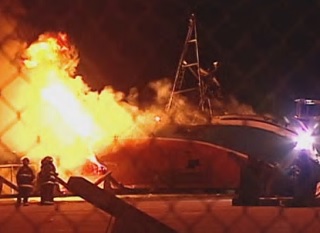
Fish processor testifies against RCMP over Shippagan riots that destroyed his plant
A Moncton court has begun hearing a lawsuit against the RCMP that alleges the force didn’t do its job during the 2003 riots in Shippagan that destroyed the Daley Brothers fish plant and warehouse, several crab fishing boats and hundreds of traps. Hundreds of angry fishermen from the Acadian Peninsula descended on Shippagan in May 2003 to protest against the federal government’s move to reduce their crab quotas to recognize First Nations’ right to live off fishing. >click to read<14:47
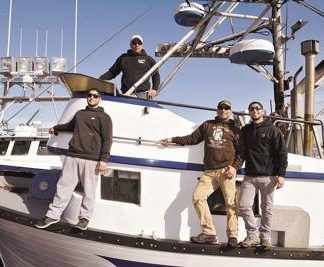
Monterey Bay fishermen catch salmon as far away as Alaska. A proposed copper mine there poses a local threat.
Tom DiMaggio is 96 years old and blessed with a full head neatly combed white hair and a warm handshake. A fisherman for his whole career, he’s been retired for over 20 years and remains a vibrant member of the fishing community – only these days, the community is far from the dock and instead gathers at the East Village Coffee Lounge in Monterey to while away weekday mornings, sipping espresso and swapping stories.,,Commercial fishing is an unpredictable profession in many ways, though the two greatest uncertainties are how many fish are caught and how much those fish sell for. The nature of the job means many fishermen want to surround themselves with a crew they can trust, which often means family. Ask the East Village table of old-school fishermen how they got started, and they all have a similar answer:, >click to read<14:00
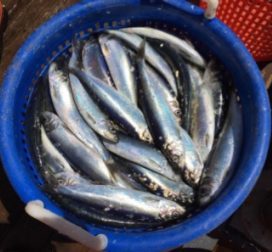
Maine’s lobster industry braces for ‘catastrophic’ cuts to bait fish catch
For the second year in a row, federal regulators have dramatically reduced the amount of Atlantic herring fishermen can haul after scientists counted far fewer juvenile Atlantic herring in the waters from Canada to New Jersey. While determining that Atlantic herring, the chief bait used by lobstermen, is not overfished, the National Oceanic and Atmospheric Administration said “recruitment” — the number of juvenile herring — is so low that on Friday they finalized a rule reducing by more than half the amount of Atlantic herring that fishermen may catch in 2019, from 50,000 metric tons to 21,000 metric tons. >click to read<12:14
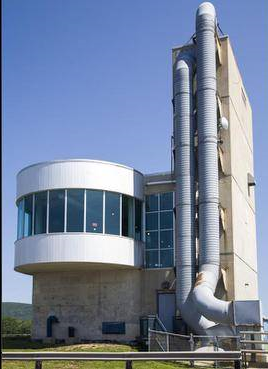
DFO ‘complacent’ on fish kills at Nova Scotia’s turbines, biologist says
A former Fisheries and Oceans Canada scientist is accusing his former employer of skewing research to allow for the continued operation of Nova Scotia Power’s Annapolis Tidal Turbine. “The Fisheries Act says you shouldn’t destroy fisheries habitat,” said Michael Dadswell, On Wednesday, members of a Canadian Science Advisory Secretariat panel tasked with reviewing existing scientific literature to help determine whether the tidal turbine is violating the Fisheries Act were supposed meet at Acadia University to review their draft report. >click to read<20:01

Seafood Giant Agrees to $23M in Upgrades to Reduce Coolant Leaks, EPA Says
Trident Seafoods Corporation, one of the largest seafood processing companies in Alaska and the Pacific Northwest, will spend up to $23 million to reduce coolant leaks from refrigerators and other equipment and to improve compliance; the company will also pay a $900,000 fine. Trident agreed to the settlement with the EPA and the US Department of Justice to resolve alleged violations of the Clean Air Act. The EPA says Trident violated the Act by failing to promptly repair leaks of the refrigerant R-22, an ozone-depleting hydrocholorofluorocarbon (HCFC). This allowed its appliances to leak refrigerant at high rates for thousands of days, releasing over 200,000 pounds,,,, Trident will retrofit or retire 23 refrigeration appliances used on 14 marine vessels to use an alternative refrigerant that does not harm the ozone layer compared to typical refrigerants. >click to read<18:12
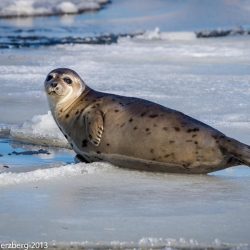
FISH-NL pleased with DFO move to increase seal licences; first step in addressing population
The Federation of Independent Sea Harvesters of Newfoundland and Labrador (FISH-NL) is encouraged that Fisheries and Oceans has finally moved to increase the number of — the first step to combating the massive population. DFO issued an advisory to harvesters earlier today to say that new applications for commercial assistant sealers will be considered.,,, The Harp seal population in the northwest Atlantic was last estimated in 2012 at 7.4 million animals — almost six times what it was in the 1970s.,,, Groups in British Columbia have called for a cull of the estimated 110,000 harbour seals and sea lions off that province for the impact they’re having on Pacific salmon stocks. >click to read<16:36
Athearn Marine Agency Boat of the Week: 47′ MDI Gillnet/Lobster, CAT 3406, Permit available
Specifications, information and 24 photos >click here< To see all the boats in this series, >click here<12:12






